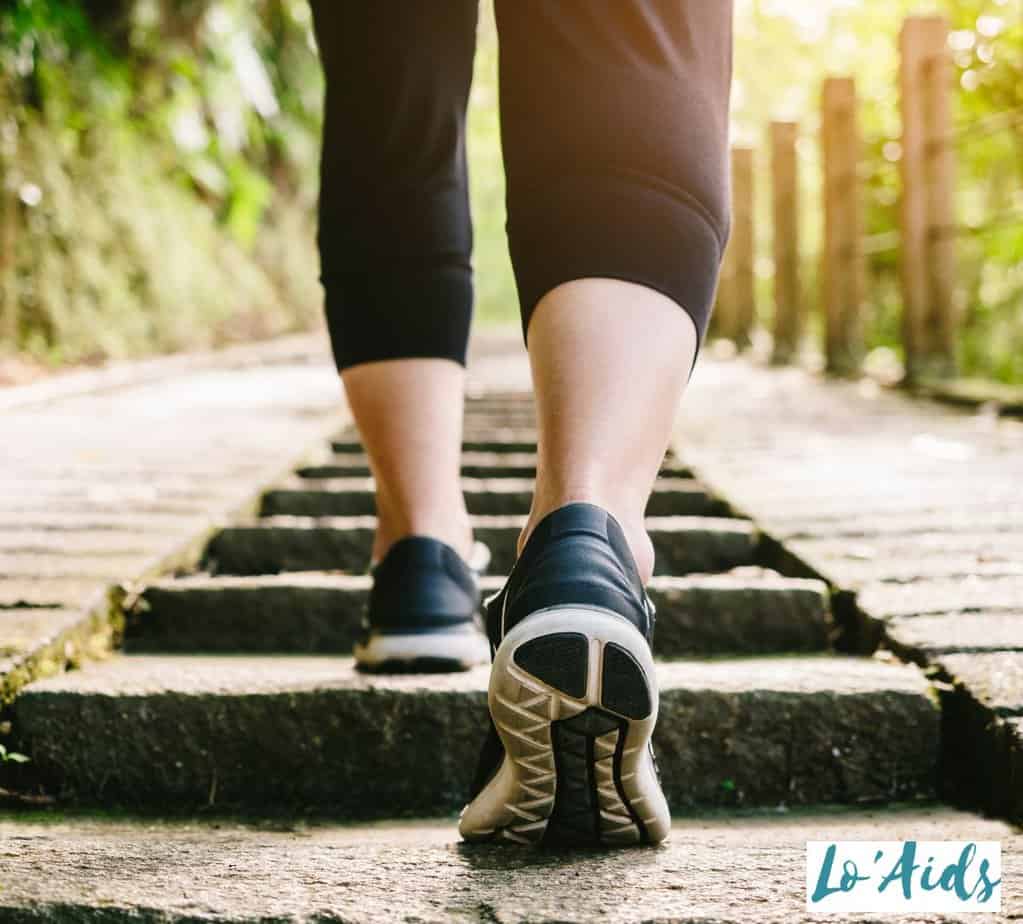Are you curious about how flexibility training can reduce the risk of back pain? Here’s something for you!
A study published in the Journal of Bodywork and Movement Therapies found that self-stretching exercises were just as effective as motor control exercises in reducing pain intensity, disability, fear avoidance, and improving flexibility in individuals with chronic non-specific low pain – and as a certified doctor, I’ve seen it first hand [1]!
In this article, I’ll reveal how flexibility training can improve your life by delving into 5 exercises for a healthy back!
Keep reading to discover the basics of preventing back pain and a healthier, more supple spine!
Table of Contents
Key Takeaways
- Strengthen Core Muscles: Flexibility training helps to strengthen your core muscles, supporting the spine and reducing strain on the supporting muscles and ligaments. This can help to reduce back pain caused by weak spinal support.
- Increase Range of Motion: Stretching exercises can increase the range of motion, allowing for a greater range of motion.
- Improve Posture: Flexibility training helps to improve posture, which can help to reduce strain on the spine and surrounding muscles.
How Flexibility Training Reduces The Risk of Back Pain? 6 Strategies
Flexibility training is crucial in reducing the risk of back stress as it enhances the ability of your muscles to support your spine adequately.
Engaging in regular stretching exercises helps prevent muscle stiffness and maintains a healthy range of motion, averting potential back issues.
Get ready to explore different exercises that can improve flexibility and help relieve discomfort.
Strategy #1: Pilates
Taking a step in exploring strategies that shield you from back pain, you stumble upon two prominent methods: Pilates and yoga asanas for back pain relief.
While Pilates is a physical activity regime grounded in the principle of controlled movements, which has proven to be a sentinel in maintaining back health, yoga offers a range of asanas specifically tailored for alleviating back pain.
Pilates stands distinct with its spotlight on the core muscles, including the abdominal muscles, and even reaching the minor muscles deep in the pelvic region.
Engaging in a Pilates regimen ensures a smooth flow of blood to these vital muscles, which is a pillar in upholding spinal health.
A salient feature of Pilates is its proficiency in amplifying the range of motion.
By progressively stretching tight muscles through a series of movements and holds, it accords a better range of motion and staves off the stiffness that typically presents with pain.
Flexibility exercises are an intrinsic part of Pilates, effectively working to lengthen tight muscles, including the pivotal hip flexors, enhancing overall flexibility and dousing the potential for muscle strain and risk of injury that comes with it.
Check out this fantastic video showcasing a groundbreaking Pilates-inspired workout for individuals battling chronic back pain.
Let’s skip to another great way: aerobic exercises…
Strategy #2: Aerobic Exercises
In the journey to understand how flexibility training mitigates the risk of back pain, you must recognize the pivotal role of aerobic exercises.
Aerobics, characterized by low to high-intensity activities that raise your heart rate, are a bastion for improving flexibility and reducing back pain.
Engaging in aerobic exercises ensures constant oxygen flow through your blood, nurturing the muscles that support your spine.
Activities such as swimming, cycling, and jogging facilitate a harmonious balance between flexibility and strength, creating a resilient shield against back pain.
Moreover, these exercises foster weight loss, reducing the pressure on your spine and lowering the risk of back problems.
Besides, aerobic exercises enhance your posture, a critical element in preventing back pain.
It’s advisable to indulge in aerobics 3 to 5 times a week, gradually increasing intensity to foster endurance and flexibility.
Here’s a video showing a low-impact cardio workout safe for individuals with sciatica or low back pain. This workout is designed to help you stay active and healthy:
Dive into the next section to learn about the more simplistic approach to maintaining back health – walking.
Strategy #3: Walking
Transitioning into a simpler yet equally potent tool for sustaining back health – walking. Often underrated, this basic locomotive function harbors incredible benefits for your back.

Walking fosters spinal fluid circulation, crucial in nourishing your spine and mitigating pain.
Incorporating a daily walking regimen can significantly augment your flexibility. It stretches and strengthens your back muscles gradually without exerting extreme pressure.
This gentle exercise also nurtures a healthy weight, further alleviating stress on your back.
Furthermore, walking encourages an upright posture, vital in preventing back complications. Experts recommend a 30-minute brisk walk daily, a small investment of time that promises great rewards in flexibility and back health.
Check out this amazing video that will revolutionize your posture and banish back pain! In just one minute, you’ll learn simple exercises that target your back and give your whole body a much-needed stretch.
With walking covered, let’s journey into the ancient realms of Tai Chi in the next section.
Strategy #4: Tai Chi
Tai-Chi, an ancient martial art from China, offers a serene yet effective pathway to back pain alleviation.
This practice involves slow, deliberate movements and deep breathing techniques, fostering flexibility and relaxation.
The graceful motions of Tai Chi enhance spinal stability by strengthening the muscles that surround it. This promotes a healthy back, reducing the potential for pain and discomfort.
Moreover, the focused, meditative aspect of Tai Chi aids in stress reduction, a common contributor to muscle tension and, consequently, back pain.
A regular Tai Chi regimen not only stands as a relief for back pain sufferers but also a preventive measure against future back issues.
Get ready to say goodbye to lower back pain with this incredible 10-minute Tai Chi routine! Join Brain Education instructor Johnathan as he takes you on a journey to a pain-free life.
Now, let’s delve into another ancient practice known for its healing properties – Yoga.
Strategy #5: Yoga
Indeed, Yoga is a potent solution to back pain, a haven of poses, or ‘asanas,’ which foster flexibility and strength.
Mixing yoga into your routine offers a multifaceted approach to back health, addressing physical and mental aspects.
Yoga promotes spinal alignment and alleviates muscle tension, preventing back pain.
Poses such as the Child’s Pose and Cat-Cow stretch provide therapeutic relief, nurturing flexibility and strength in your back muscles.
A regular yoga practice, guided by a knowledgeable instructor, can be a cornerstone in your journey to a healthy back, reducing the risk of back pain substantially.
Check out this amazing video showcasing a mind-blowing yoga routine that will banish your back pain!
NEXT: Let’s discuss Back Support Braces…
Strategy #6: Back Support Braces
Embarking on a journey toward optimal back health necessitates embracing the indispensable role of quality back support systems.
A prevalent misconception is the perceived back weakening through consistent use of a back brace; however, this couldn’t be farther from the truth.
Renowned researchers Nobuko OKUBO and Michiko HISHINUMA substantiated through their 2005 study that utilizing back support can positively influence the autonomic nervous system [2].
The study found that “sitting in a position with back support but no neck support increased the function of the sympathetic nervous system and decreased the function of the parasympathetic nervous system more than sitting in a position with both back and neck support.”
This report outlines the key role back support plays in improving physiological responses.
Modern back supports to foster a healthy spine alignment, enhancing your posture and overall back health.
- ✅ 𝐁𝐘𝐄 𝐁𝐘𝐄 𝐁𝐀𝐂𝐊 𝐏𝐀𝐈𝐍: Stot Sports back brace ensures instant and lasting relief for diverse back concerns. Our back brace for women, and men offers enhanced comfort and robust support during daily activities such as walking, bending, and intense gym workouts.
- ✅ 𝗨𝐍𝐁𝐄𝐀𝐓𝐀𝐁𝐋𝐄 𝐋𝐔𝐌𝐁𝐄𝐑 𝐒𝐔𝐏𝐏𝐎𝐑𝐓: Featuring six discreet vertical supports, including four plastic stays and two spring bones, our back brace for lower back pain women delivers excellent support and prevents rolling up, ensuring comfortability & stability during all activities
- ✅ 𝗕𝐑𝐄𝐀𝐓𝐇𝐀𝐁𝐋𝐄 & 𝐅𝐋𝐄𝐗𝐈𝐁𝐋𝐄 𝐃𝐄𝐒𝐈𝐆𝐍: Crafted from high-quality mesh fabric, our back support brace offers superior comfort, keeping you cool and dry during intense activities. With outstanding elasticity, it ensures a perfect and adjustable fit, allowing confident and flexible movement throughout the day.
- ✅ 𝗖𝗢𝗡𝗩𝗘𝗡𝗜𝗘𝗡𝗧 𝗦𝗧𝗢𝗥𝗔𝗚𝗘 & 𝗩𝗘𝗥𝗦𝗔𝗧𝗜𝗟𝗘: Our back support belt comes with a spacious mesh bag for easy storage and carrying, making it convenient for outdoor activities. Wear it discreetly under clothes or make a fashion statement over clothing, offering dual-style versatility for all ages, genders, and body types.
- ✅ 𝗥𝗘𝗠𝗢𝗩𝗔𝗕𝗟𝗘 𝗟𝗨𝗠𝗕𝗔𝗥 𝗣𝗔𝗗: Experience heightened back comfort with the sizable and detachable lumbar pad. With our back brace for men you can quickly attach or detach the lumber pad, using secure hook and loop closures, ensuring convenient and irritation-free support throughout the day.
- ✅ 𝟏𝟎𝟎% 𝐒𝐀𝐓𝐈𝐒𝐅𝐀𝐂𝐓𝐈𝐎𝐍 𝐆𝐔𝐀𝐑𝐀𝐍𝐓𝐄𝐄𝐃: We're confident you'll love Stot Sports Lower Back Brace for men and women that are incredibly user-friendly. If dissatisfied, contact us for a prompt refund. Your happiness is our priority. Order now with confidence! We stand behind our lower back support belt.
They stand as a beacon of relief, marrying comfort with the essential support that your back needs, particularly during exercises.
Check out the video below for my recommended back support:
Next, let’s see why physiotherapists are a great help!
Do I Need to Visit a Physiotherapist?
Despite all preventive measures, there might come a time when consulting a physiotherapist becomes inevitable.
Physiotherapists offer a personalized approach to back health, developing tailored strategies to alleviate pain and enhance flexibility.
Not only do they provide solutions for common back issues, but they can also address specific post-surgery complications, such as the causes of buttock pain after hip replacement.
A physiotherapist can be your guiding light if you struggle with chronic back pain or recover from a back injury.
They can help restore functionality and reduce pain through targeted exercises and stretches, teaching you the correct techniques to maintain back health in the long run.
A physiotherapist should be consulted when self-help measures no longer suffice, steering you towards recovery and health.
Any burning questions still lingering in your mind? Find the answers you need by diving into our treasure trove of frequently asked questions!
Frequently Asked Questions
1. What is flexibility training?
Flexibility training is a way to stretch the muscles to improve the overall range of motion.
It can help to reduce stiffness, improve joint function, and increase muscular strength and endurance.
2. Why is flexibility training important for back pain reduction?
Flexibility training can help to strengthen the back muscles, potentially reducing tension and strain in the area.
You’re less likely to experience back pain or injury when your muscles are stronger.
3. What are some of the best exercises to do for flexibility training?
Some of the best exercises for flexibility training include stretching, yoga poses, and foam rolling.
Stretching helps to increase the range of motion in the muscles and joints, which can help reduce back pain.
Conclusion
The article answers “How can flexibility training reduce the risk of back pain?” through a holistic approach – using 5 effective strategies…
In fact, implementing a regimen of aerobic exercises, Tai Chi, yoga, and other forms of flexibility training is the cornerstone to reducing the risk of back pain.
Enhancing this regimen with the support of a premium back brace not only elevates your training but also ensures the well-being of your back in the long term.
Remember that a happy back translates to a happier life.
Do not compromise on your back health; instead, invest in reliable back support to pave a pathway to a pain-free back, thus fostering a life of vitality and vigor.
Now, leave a comment sharing your experiences, ask any questions, or just say Hi!
Until next time…
Resources
1. Turci AM, Nogueira CG, Nogueira Carrer HC, Chaves TC. Self-administered stretching exercises are as effective as motor control exercises for people with chronic non-specific low back pain: a randomised trial. Journal of Physiotherapy. 2023;69:93–9.
2. OKUBO N, HISHINUMA M. Effects of aided and unaided support of the neck while sitting (with back support), on autonomic nervous system activities. Japan Journal of Nursing Science. 2005;2:33–9.







Great tips!!! Going to share this with some family!
My husband might have to do this with his back. He’s always had a bad back so he has to be careful.
I have some lower back pain and I find that some gentle yoga each morning really helps.
I love Pilates, I used to do it back in the days…but now I can’t really give much to it, so I just look into the food I eat, I stopped eating sugar and inflammatory food and my back doesn’t hurt – if I ever eat something with sugar, it hurts. :/
This is all great to know. I’ll have to follow along and try some of these. I have back pain sometimes, so this is helpful.
Great suggestions, flexibility training can not only help with pain reduction but will also help with increasing range of motion!
This is one of the most interesting topics! Thank you for sharing this information with me.
These flexibility training tips are fantastic! The explanations are clear, and the exercises are easy to follow. Thanks for sharing these strategies to reduce back pain. My back feels better already!
These are such great strategies to reduce the back pain! I must share this with my parents.
These are GREAT tips! In 2013, I had a spinal fusion and some of the exercises that the physical therapist gave me in preparation were yoga and pilates!
Great tips. I have back pain and some of these I do try. I do find that yoga does help my back sometimes.